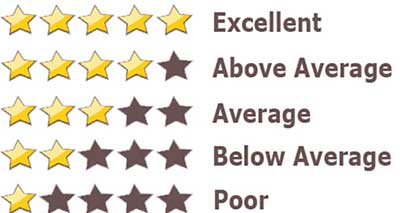Relevance: GS-3: Conservation, environmental pollution and degradation, environmental impact assessment
Key phrases: Star-rating system, State Environment Impact Assessment Authority (SEIAA) , EIA (Environment Impact Assessment) Notification 2006
Why in News?
- Recently, a move by the Union Environment Ministry to implement a ‘star-rating system’ has sparked controversy in academia that it may lead to dilution of Environment Impact Assessment (EIA).
- Under the star rating scheme, State-level environment committees that appraise industrial projects on their potential environmental risk would be incentivised with points for “transparency, efficiency and accountability”.
- This idea followed to facilitate the Government’s broader commitment to ‘Ease of Doing Business’.
What is the Environment Impact Assessment (EIA) ?
- EIA as per UNEP: The UNEP defines Environmental Impact Assessment (EIA) as a tool used to identify the environmental, social and economic impacts of a project prior to decision-making.
- The Environmental Impact Assessment (EIA) is one of the cornerstones of ensuring that the ecological costs of infrastructure development are minimal.
- Prospective projects above a certain size and with a potential to significantly alter the natural environment must be first approved by the State Environment Impact Assessment Authority (SEIAA) comprising State officers and independent experts.
- Projects that are even bigger or involve forest land — category A — must be cleared by an expert committee formed by the Centre.
- The SEIAAs are responsible for providing permissions and environmental clearance for more than 90 per cent infrastructure, developmental and industrial projects, and are considered ‘less polluting'.
What is the proposed Star Rating System ?
- The ranking system is based on the provisions of EIA (Environment Impact Assessment) Notification 2006 and various guidelines.
- It aims to encourage the SEIAAs to increase their efficiency in decision making strictly without compromising on any regulatory safeguards.
- It is pertinent to note that the EIA Notification already provides time-lines for all EC processes.
- The star rating system proposed is to “rank” and “incentivise” States on how quickly and “efficiently” they can accord environmental clearances.
- It spells out seven criteria to rate SEIAAs on “transparency, efficiency and accountability”.
- On a scale of 7, an SEIAA, for instance, gets more points for granting a clearance in less than 80 days than for within 105 days and no marks for more.
- A score of seven or more would be rated ‘five star’.
Environmental Activists: Issues with star rating system
- Efficiency without Appraisal: reading of the order gives the impression that States, in the quest for more stars, would logically vie for speedily clearing projects rather than ensure a thorough appraisal.
- Lack of Environmental Experts: While quicker decision-making benefits everyone, State committees are currently hampered by having too few independent experts and decision-making being left to bureaucrats rather than to environment specialists.
- Environment concerns may get compromised: industrialists and States gain from projects and, therefore, the tendency is always to escape environmental concerns.
- Site visits may be hampered for speedy clearances: site visits are critical to understand the potential environmental challenges. Calculating the risks and the benefits of industrial projects vis-à-vis their environmental impact is understandably hard.
Government Argument: Efficiency, EoDB, Faster Clearances
- Red tapism to Red Carpet: The Environment Ministry, has said, in response to criticism, that the intention is not to hasten clearances but accelerate the pace of decision making.
- Reduce Regulatory Cholesterol: Rather than files being sent back for every query, all objections must be compiled and addressed at one go, it contends.
- Efficiency, Transparency and Accountability: The move has aimed at “encouraging the efficiency, transparency and accountability in the functioning of SEIAAs’’ without diluting any regulatory safeguards.
- No penal provisions: Also said no SEIAA will be penalised for taking more time in granting permission.
- EoDB accelerate: To enable “Ease of Doing Business”, especially in the context of “ranking of states" based on the time taken in accordance with clearance.
- Enough flexibility in calculation of time taken: In case of deficiency in proposals, the SEIAA may raise Essential Details Sought (EDS) and the period for which the reply is pending “shall not be counted for calculating the number of days taken by the SEIAA.
- Due diligence not compromised: SEIAA has complete freedom to do all necessary due diligence before taking decision on project without worrying about the time-line
Way Forward
- Take steps to increase trust in the system and ensure that all States have competent experts who can conduct appraisals without fear or favour.
- At present the EIA notification limits itself to the stage when environmental clearance is granted. The MOEF should set up more regional offices, each with smaller areas of jurisdiction, to effectively monitor the compliance of clearance conditions.
- It would be useful to have advisory Expert committees at the MOEF regional offices, comprising ecologists, sociologists, local community members, government officials and representatives of local institutions to help with the clearance of projects at the regional levels and monitoring of compliance of conditions. A robust monitoring mechanism should be established by the state department where the central projects involving forest clearance are given out.
- Such a monitoring body should be given powers to address compliance of both sets of clearance conditions together and to take punitive action against the project proponent in case of non- compliance of any of the conditions.
Source: The Hindu, Indian Express
Mains Question:
Q. India’s approach toward environmental impact assessment is very confused and full of paradoxes. Critically examine this statement with special emphasis on recently proposed star rating system for environmental clearances.( 15 marks)







